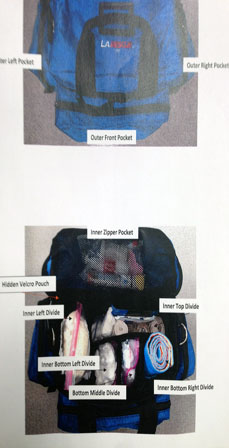
Home > Dispatches > Daily Dispatches 2019 >Daily Dispatch #276
October 6, 2019: Keeping the E on EMT
Take the E off EMT and you have m t, which is how I have been feeling about taking an EMT class. Even after having taken previous classes in this area of specialization, I at times find it to be daunting. It’s challenging in so many ways – students must conceptualize, memorize, prioritize, and organize a great deal of information. This morning I took a practice test, one in which the proctor gave the right answers and explained why they were correct. I got maybe, at the very most, 4 out of 20. I was, after this, so ready to go and drop the course. But then I recalled that I understood the logic behind the given answers. I also told myself that the questions were maybe harder than 3/4rdsof the given test. One thing that interests me is that it was implied that the scene safety and the primary and secondary assessments are a template for the questions. In doing assessments, the EMT does things in a specific order, scene safety centers around keeping oneself safe, primary assessments center around dealing with life threats, which is why airway, breathing, and circulatory management are so important. And secondary assessments further stabilize the patient and enable the EMT to further determine what’s amiss. Yeah, I get it. However, I was on shaky ground in dealing with the trauma skills sheet. You have to verbally account for scene safety and do a primary and secondary assessment/physical. I’ve been practicing a lot, but I was missing a lot of things. And I wasn’t sure of the proctor’s role. |
|
Two classmates were there. One fellow is doing the best in the class. Another is doing the worst. The lab aid ran us through scenarios, we did two each. I went first. I was very nervous in part because this meant that I wasn’t following anyone else’s lead. The first time through I missed a few things. The second time it went much better. The very good student did just as well. The not so good student did really poorly. He is in my group – he is not going to give up, but I think that he is too far behind to catch up. I learned a lot of things – the most important being that we’ll be interacting with the proctor on Saturday – doing the exam and asking relevant questions as we go along, such as, what is the patient’s pulse, respiration, and blood pressure? I like this as opposed to the silent proctor method because, of course, it takes the guess work out of the equation. At the same time, it feels to me like a dance of sorts – you are working in unison with the proctor. So this made me feel like I was EMT and not MT. |
|
